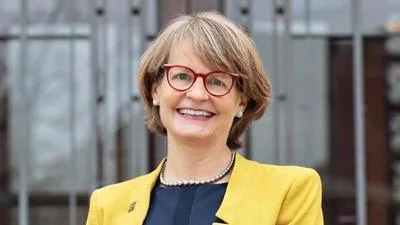Officials from more-affluent school districts in Michigan think the distribution of the federal COVID-19 relief funding is inequitable. | Charlotte Govaert/Pixabay
Officials from more-affluent school districts in Michigan think the distribution of the federal COVID-19 relief funding is inequitable. | Charlotte Govaert/Pixabay
Some of Michigan’s education leaders want to see school funding reallocated to close the -- in some cases -- very wide district gaps in schools throughout the state.
This push stems from low-income districts like Benton Harbor Public School, which received 172 times the amount of COVID-19 relief than students in Northville. Hamtramck will receive $10,476 per student in comparison to Brighton Area Schools, with students receiving $179 per student, according to research by Bridge Michigan. Even with more than a 100-fold difference between districts, there are some leaders, like Detroit Superintendent Nikolai Vitti, who are critical of these efforts.
Many school advocates have raised the argument that students in low-income districts need more support and resources than those in wealthier districts. For others, the gaps in funding are hard to justify.
“Title I Part A formula is an awkward vehicle for distributing relief during a pandemic and must be rethought if additional federal dollars are made available,” Michael Rice, state superintendent, told Bridge Michigan. “That formula, while perhaps legitimate for distributing funds to support educationally disadvantaged students under normal circumstances, is inadequate to support all children during a pandemic.”
The Michigan congressional delegation received a collaborative letter from seven schools across the state that requested school relief to shrink the funding gap. The associations requested that half of the funds be associated with Title I and the other half left to be decided by the state.
“This tweak would ensure that every district receives critical relief to address the pandemic-related expenditures, while also guaranteeing that our districts with the highest percentage of disadvantage students receive the aid they need,” the letter said, according to Bridge Michigan.
Hannah Lindow, spokesperson for Rep. Elissa Slotkin (D-Holly), said that the funding gap is “something we’re looking at closely,” reported Bridge Michigan.
Vitti spoke out about the need for critics to consider the difference between equity and equality.
“For the first time in my 20-year history of doing this work, the allocation of Cares Act I and II funds represents equitable funding,” Vitti told Bridge Michigan. “Those who have greater needs received more. Those with fewer needs receive less…. It’s actually interesting to observe all of the lobbying efforts and commentary by district leaders in suburban districts. Where have these calls for equality/equity been, considering the way in which the state allows and perpetuates tremendous inequity through the local (school funding)?”
The debate on the funding gap is an uncomfortable topic for leadership, president of the K-12 Alliance of Michigan Robert McCann said. “No one is arguing that any district is getting too much money,” McCann told Bridge Michigan. “But solely relying on Title 1 means some districts aren’t getting what they need.”






 Alerts Sign-up
Alerts Sign-up